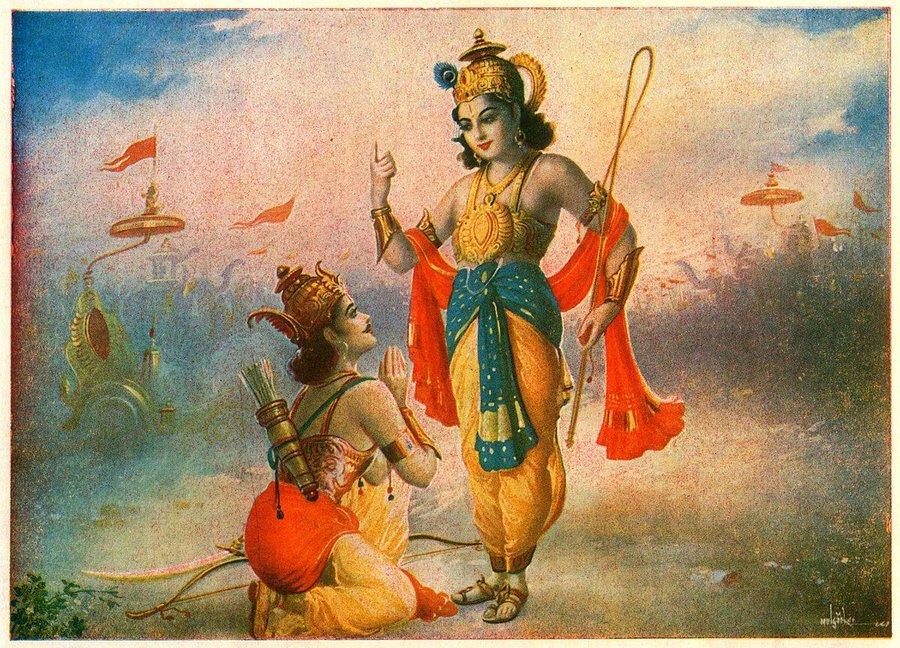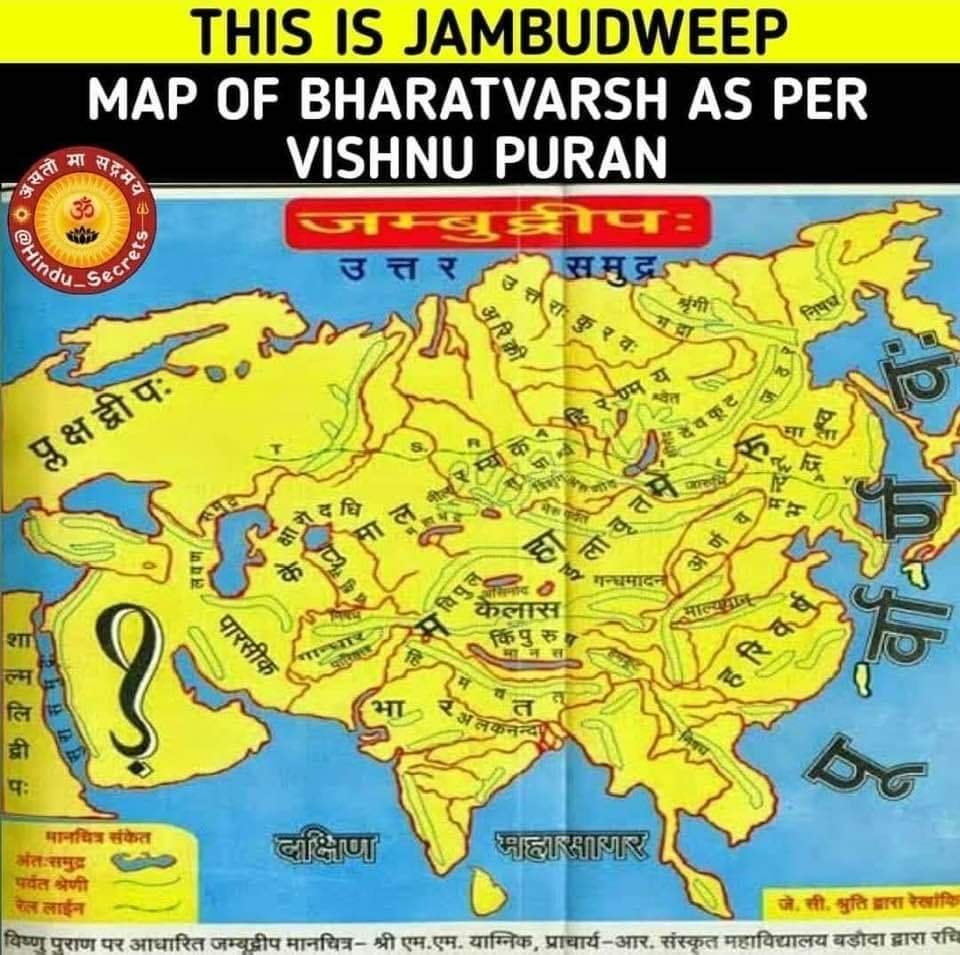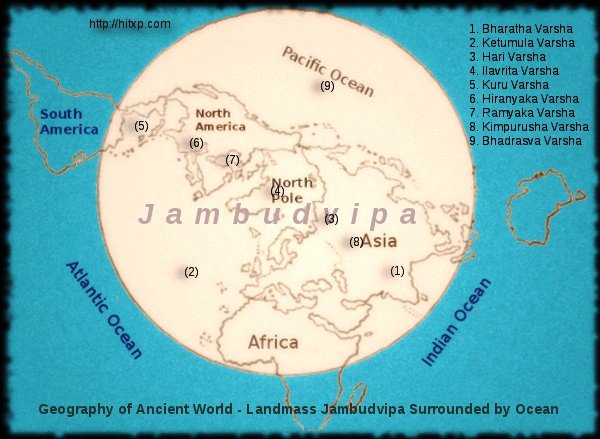Srimad Bhagavad Gita: The Best Ever Self-Help Book!


Today is Vaikunta Ekadashi – the day on which Shri Krishna resolves the conflicts Arjuna has in his mind and gives him utmost clarity of life. Here Lord Krishna represents the ultimate consciousness and Arjuna represents a life sensitive human being like you and me who in real life find it difficult to cross hurdles or challenges regularly because of our own lack of clarity on what is right or wrong.
The occasion is the battlefield where Arjuna is facing the enemies that comprise of his Guru Dronacharya, his most beloved great-great-grandfather Bheesmacharya and many loved ones among his cousins and friends. As a warrior he is supposed to fight/kill them; but the most powerful warrior he is – is not able to gather the courage to fight for obvious reasons. Arjuna tells Krishna – who is his friend, guide and sarathi (charioteer) – that he prefers to spend rest of his life as a beggar instead of facing/defeating his loved ones in this battlefield. That is when Krishna tells Arjuna to not give up the fight; and that it is his duty at that moment to fight with full force, full energy, with utmost sincerity and spare none without any personal bias.


Bhagavad Gita is not a holy or religious book to be kept in shelf for worshiping.
Bhagavad Gita is the first and the best ever self-help book on life.
The only edge human beings have over other life creatures is the ability of awareness to choose consciousness over ignorance. If this unique facility among all creatures given to us is ignored, then we will be living in ignorance. Ignorance can give temporary happiness or ‘high’, but surely permanent suffering. Whereas consciousness is the constant awareness of being sensitive towards life around us.
The Gita sets the path for you to move away from the darkness of ignorance towards the light of wisdom and finally towards the merging with the ultimate state of blissfulness (also called moksha/mukti/nirvana – permanent liberation from suffering).
Unfortunately more than 90% of Hindus do not even know how many super-rich scriptures are gifted to us as treasure of knowledge & wisdom. The only famous of them all is The Gita because it contains the comprehensive teachings of all the scriptures (The Vedas, Upanishads, Puranas, Smritis etc) combined together for anyone to imbibe for clarity and transformation to a higher state of being with consciousness as tool.
For example many Hindus due to brainwashing done by entertainment & other governing sources (wanting to promote their own adharmic cults/ideologies) – stayed away from Dharmic scriptures resulting in permanent confusion/conflicts of life; having to depend on fake ‘wisdom’ that is fed by such selfish entities. So many Hindus, in the process, became minimalist, are ashamed to call themselves Hindus, because of lack of ‘identity’ Sanatana Dharma gives – hence many either convert, or become atheists (disbelieve God). Similarly agnostics do not care about the idea of God – they only focus on their roles & responsibilities towards society. Both these categories of people are still humans and are supposed to be human – i.e. to uphold and prioritize humanity in various situations. The teachings of wisdom in The Gita is also applicable & works wonders to those who chose to be nastik (athiest/agnostics).
Firstly to win any battle, one needs to identify the side to chose which his the most crucial part. In this current battle of Dharma vs Adharma that is going on, how to choose Dharma and unabashedly fight Adharmics is the key to save Dharma – the righteousness, ie the right side of humanity, right side of justice!
It is constant battle between Dharma & Adharma, that can be clearly seen in the invasion of totalitarian cults to our Bharat Varsha, grabbed our people and broke it into Islamic nations. This would not have been possible without traitors like Jaichand. More Dharmics the society has more Dharmic the society becomes. It is all about the ratio of Dharmics to Adharmics in a society that decides the Humanity Quotient of the land.
So it’s the human being who can choose to be conscious about that fact that he/she is carrying his/her mind and body which come with sensors (senses) and control (switches) to take him/her to the ultimate.
More selfless the person is, more likely would be his/her contribution towards the society.
Whereas a human being can choose not to be conscious about this fact and gets driven by the senses that are signals the body sends, eventually (the body/mind) taking control of deciding his/her destination.
The source of adharma is selfishness.
Duryodhan was the epicenter of Adharmic gang in The Mahabharata & all those good souls like Bheesmacharya, Kripacharya for some reason or the other related to their own self-commitment or priority of something about their own self over Rashtra Dharma (saving the nation), ended up being in Adharmic side of the battle.
More selfish the person, more likely would he/her be a danger to the society.
The Gita comprise of 18 chapters and overall 700 shlokas (verses) in sanskrit translated in English and various other languages. Though the most popular of them is the one by the founder of Iskcon, there are different perspectives and takes in the translations that can be tried as well.
Every chapter takes you closer to the divine that you can sense based on past experience of life. Repeat reading gives clarity on certain areas than acquired previously – and that’s pure magic.

So give a break from your social media activities, netflix, amazon etc. commit a dedicated time-slot for this novel, life changing experience.
Hare Krishna!!
DISCLAIMER: The author is solely responsible for the views expressed in this article. The author carries the responsibility for citing and/or licensing of images utilized within the text.
